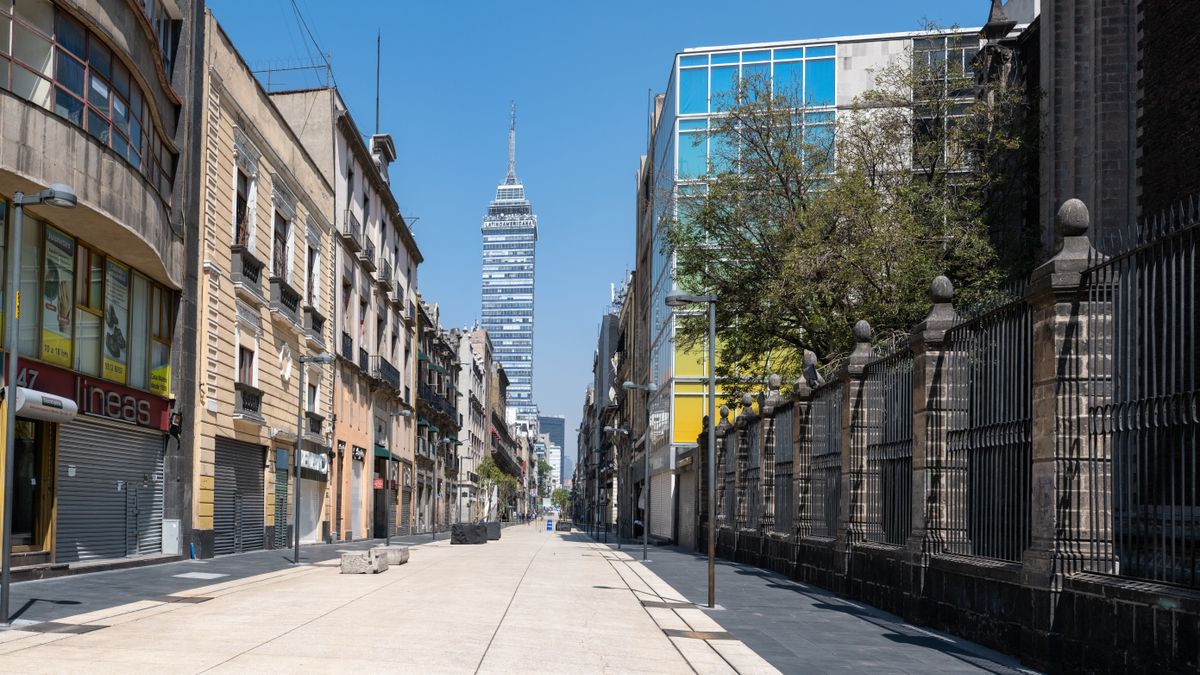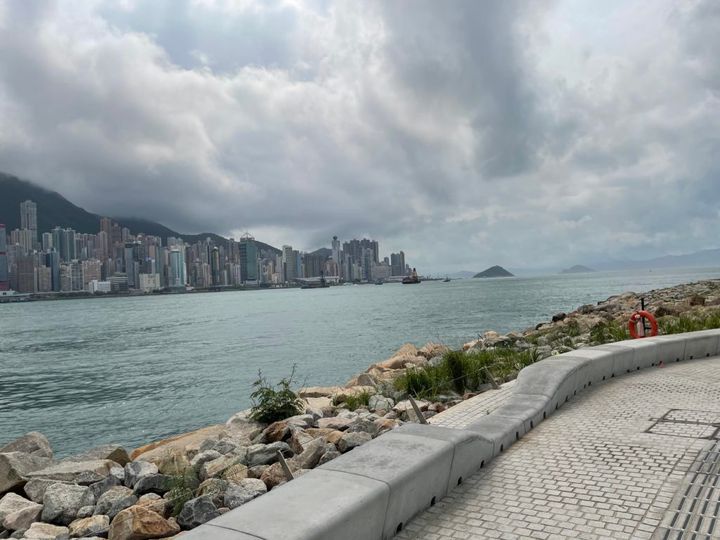In an article published in the New York Times on the 12th of February, David Leonhardt reported on the latest round of restrictions imposed by Berkeley University, which prohibited outdoors exercise, even while wearing face masks, to prevent a further surge in Covid-19 cases. The measures taken were justified by the slogan: “THE RISK IS REAL”.
I intend to analyse this statement and stress the necessity of asserting with emphasis that indeed THE RISK IS REAL. The evidence lays in the sentence itself, and on the conviction held by many, that THE RISK IS UNREAL – a classical example of Freudian negation.
The statement introduces exactly what I intended to focus on in this conference: the foolish misbelief in death that affects the spirit of our time.
Characteristics of the pandemic
The pandemic that currently affects us and shakes our beliefs, as well as the ideological formation which has formatted our psyche and cognition, differs from previous pandemics insofar as it compounds at least two defining features:
- Contagion is not “zonified”. The pandemic is universal in the manner in which it exposes that we are all vulnerable and that the threat is generalised. It is obviously the case that national fortunes may allow for the purchasing of more vaccine doses, and personal wealth may grant the possibility of self-isolation as well as higher quality medication and therapy for the illness’ treatment. Yet the exceptionality of this pandemic is manifested by the fact that its reach is not limited to a single region above others, unlike ebola or malaria, nor a particular social strata, as in the case of HIV/Aids. The most powerful nation has been the most severely affected; the wealthiest and most democratic continent in terms of public health has suffered great casualties; public figures of great fame and prestige, the powerful and notorious have also been infected… some of them with no return. The pandemic has shown that political borders do not coincide with biological ones and will continue doing so in spite of what has been termed “the vaccine apartheid”: in countries deprived of vaccine doses, the virus will continue to mutate through channels external to spaces immunised by vaccination programs… and will eventually return.
- A the same time, the pandemic takes place in a time in which what I have elsewhere defined as a “Western neurosis for control”[2] has reached its most paradoxical point: disregard of time, misbelief in the historical nature of everything that lives, cartesian extremism – namely the belief that just like the mind is located outside of the res-extensa, the human subject is removed from its ecological milieu, and from that outside exerts a totalising power upon the history of everything that lives and thus on life itself. The pandemic affects a human being expatriated from life, in a self-inflicted exile from the inevitably erratic flow of everything that is vital, supposing in this way to cancel out any indeterminacy and uncertainty.
The combination of these two characteristics of the current pandemic event destabilises those beliefs inherent to our epoch. Hovering over the world in the manner of a great scanner, the pandemic unveils its occult structure, its skeleton. It is like an “eruption of the real”, which corrodes the phantasies of omnipotence inherent to the final, apocalyptic nature of contemporary capitalism. It could also lead to a reset, a restoration… but we have the antidote, the brakes available to restrain that potential capacity of transformation within the system itself.
The fatal misbelief in death
Some aspects of the pandemic seem to further the distance and lack of compromise with the transition through life’s decadence. Our connection with that experience is filtered by televisual, telematic media. Unlike previous pandemics, we neither see death nor is death apt to be represented in any form: it is not pictorial nor suitable to be rendered in statuary. The act of dying is not exposed nor registered in paintings that will be remembered across time, as it was the case with plagues from the past. We do not see death coming in suffering, stained, wounded bodies, nor is our gaze laid on the corpses disfigured by pain and sickness. All we see is aseptic medical centres, patients connected to machines and enclosed by plastic screens. Distance. At most we see coffins and crosses in cemeteries.
It also affects us in an epoch where virtuality has seized control over communication. Virtuality becomes imperative as the use of virtual communication is a necessary condition for many of us to be able to work. Over twenty five years ago, in 1995, when what back then used to be called “chat rooms” had just started to appear, I spent some months observing how communication took place within their domain around an apparently innocuous topic: religion[3]. My conclusion was that virtuality would lead to deleterious consequences to sociality. Interactions that I have been following during that early stage of virtual communication, revealed “the omnipotent character of the contemporary subject of internet communication and its “telescopy””. In my account, the possibility of “pretending that the body can be discursively invented in the cybernetic world, induces a feeling of omnipotence and increases the aggressiveness in the subjects/users”. Such “contemporary symptom”, I conclude in that text, “derives from the simulation enacted by cyberspace users to interact as if the body did not exist”. What emerges is “a specific trait of the contemporary western subject, compatible to certain types of technologies – both of communication as well as military – which promote and facilitate a certain positioning of subjects so to allow them to pretend not to experience the limits imposed by the materiality of one’s own as well as (an)other bodies”. This limitation stems from the body being “the first Other, the first experience of one’s finitude, the first image of incompleteness and lack”:
When (this limit) is foreclosed – and the foreclosure is reinforced by a technological device-, all forms of alterity stop constituting the limit that the subject needs to (literally) qualify as a social subject. We are facing a regressive reality, provoked by a narcissistic phantasy of completeness and the denial to recognise oneself as castrated, limited by materiality as the ultimate indicator of one’s finitude (Segato, 2003: 16).
The body no longer exists if not as a phantasy – created by an omnipotent, hypertrophied ego, the body is no longer perceived as mortal.
Hence we are approaching another dimension of our present, what I have previously referred to as the “pedagogy of cruelty”. The notion, often misunderstood as simply a multiplication of violence against women or the ubiquity of instances of cruelty that pervade our age, is in fact grounded on a different and more specific premise and, more importantly, it has a history: the history of a continent that came to be seen before the rapacious gaze of the conquistador as land liable to be appropriated. The birth of the world/thing as an object of usurpation and accumulation. The pedagogy of cruelty is nothing but the act of “training and normalising the transformation of life into an object, to perceive life as an object and treat it as such – the body/thing, the nature/thing.”[4]
The world has come to be understood as up for purchase, in a gradual process leading to a present that would be reductive to describe simply in terms of inequality, as ownership (dueñidad) is what de facto is at work. In other words, a pedagogy of cruelty is what moulds subjectivity to constrain it within a psychopathic personality, lacking any relational capacity to forge bonds, resembling a prosthesis of the ego in a self referential protean and narcissistic relation. This psychopathic shaping of sensibility constitutes the exemplar personality of our time, through its functionality to the historical project of capitalism in its contemporary stage. The pedagogy of cruelty is what programs us to reduce the threshold of sensibility to the suffering of others. Things do not suffer, they do not die nor obsolesce. Things exist only to be appropriated, used, consumed, left in spoils that do not resemble the devotion conferred to corpses by funerary ceremonials, but waste of consumption abandoned in a garbage dump.
The most specific symptom of this programming of personality by the pedagogy of cruelty, is its effect upon the life of women and children, through rape, paedophilia, harassment of bodies, the perverse exploration of limits; Ciudad Juárez, Ayotzinapa, and the all the feminicides that continuosly increase in our continent of Conquest and Objectification. IT IS NOT DEATH, BUT MERE APPROPRIATION AND CONSUMPTION, in a world split by two great historical projects heading towards opposing conceptions of fulfilment: The “historical project of objectification”, and the “historical project of affective bonds”. The former operates in the manner of the legend of the king Midas: it looks over landscapes, turning them around until they return inert to the gaze that scanned them. Everything becomes gold, everything becomes an object, until no form of life is left. The historical project of affective bonds instead creates commonality. Contemporary life is ambivalent. We wonder through both paths until eventually only one prevails, as they are incompatible and pointing at different horizons. Communities connected by communal and local ties understand such difference and utilise objects in order to preserve their bonds – the ritual, the ceremony hold such function. Mass societies on the other hand consume bonds to acquire things. In this world/thing death no longer exists. One no longer believes in death as in order to believe in death one must have believed in life.
Some specific examples allowed me to perceive the effects of the incremental exposure to the pedagogy of cruelty:
- When the movie A Clockwork Orange by Stanley Kubrick (film adaptation of the homonymous novel written by Anthony Burgess, inspired by the events that saw the violation of his pregnant wife by a group of American soldiers in London during WWII) was released in 1971, it was soon perceived to be the most cruel piece of cinematography of all time. It was also the most censored movie in the history of cinema, including in England itself, where the novel was written and the movie shot. Today, as the movie’s main character, British actor Malcolm McDowell, declared in an interview, the movie seems to be perceived as a comedy. What process took place in this time lapse? What happened to us? How was it possible, and through which paths, that our sensibility was hardened enough for us not to feel the unbearableness of what the movie is depicting?
- The biography of Chelsea Elizabeth Manning, born as Bradley Edward Manning in Oklahoma (1987), offers some key interpretative tools to understand what numbs our experience of finitude in ourselves and others. In an interview published for the New York Times[5], Manning explains how since a young age she perceived in herself an undefinable difference from other adolescents. But even so, and perhaps precisely for this reason and in aspiration to some form of “normality”, she decided to join the military to become a soldier, following her father’s steps. Her father, a retired veteran of the United States army, had since opened an IT support and computer repairing shop, where Manning spent most of her childhood and adolescence playing video games. In the description Manning gave to the New York Times journalist, she put emphasis on her addiction to video games that accompanied her throughout most of her life. The interview itself, that dates back to 2017, eight days after she was released from seven years of isolation, took place in front of an Xbox console. When Manning officially joined the army, due to her IT skills, she was entrusted to archive visual material concerning images from the invasions of Iraq and Afghanistan. Later on, she was relocated on the field in Iraq where she carried on her archive job. One day, whilst being moved from one base to another, she witnessed an actual military confrontation for the first time. This astonishing experience was a shock for Manning. It was only then, as she described to the journalist, that the vision of a dead body made her realise that those were people, people who were dying. “At a certain point, I stopped seeing records and started seeing people”. I found this confession deeply moving and it strongly affected me. We witness a real act of conversion by Manning, her first conversion. Prior to this realisation, as a result of her addiction to video games and her subjection to the pedagogy of cruelty that was deployed on her, her unempathetic and psychopathic programming, her life was virtual, two-dimensional, cybernetic. She eventually opened her eyes to human life and consequently decided to disclose the biggest file of confidential information ever leaked from American intelligence. The greatest flow of undisclosed information that Julian Assange received, came from Manning, who was then convicted to years of detention and isolation in a maximum-security prison. One of Obama’s last acts as a president was to commute Manning. As she gained back her freedom, she left her detention as a woman, changed by what I would consider her second conversion. A path of conversion to sensibility and femininity. I believe her story captures key aspects of our present and her persona embodies the mysteries of programming and deprogramming, or rather of deprogramming as an act of conversion – or perhaps has “manning” become a hermetic term that symbolises the process of “(re)becoming human”?
Pedagogy of Cruelty and Mandate of Masculinity
The pedagogy of cruelty, as a program of desensitisation towards life aimed at the reduction of everything that is vital in our bodies, in our landscapes, everything that surrounds us, in the ecosystem that we inhabit, to a lifeless object – manageable quod vide and with no restrictions, without the limits that could be posed by a vital, antagonistic subjectivity, endowed with other drives, pointing at an alternative destiny to the one assigned – is also a crucial methodology in shaping men to carry out the mandate of masculinity as a mandate of ownership. The paradigm that renders possible a detailed observation of such procedure, is to be found in the training received by the members of state, as well as private, security apparatuses. Two examples:
- The training imposed by the Federal Police in Argentina, according to Miguel Robles’ account, a a senior officer of the officialdom, operates through the method of the companion dog: a puppy coexists with the young cadet during the training, until the new policeman, once graduated, is compelled to assassinate the animal… I wonder whether this might be true or not. In either case, it reveals a sinister, perverse and inhuman imagination.
- The account of trauma narrated by Ecuadorian economist Alberto Acosta, president of the Constitutional Assembly of Montecristi and renowned environmentalist, recalls how while attending the military academy in his country, young cadets were forced to eat a raw onion each morning: being tortured in order to tortur; facing the proximity of death in order to kill; bearing one’s own suffering, physical and moral, to objectify one’s body; being alienated from it and from one’s sensibility in order to objectify others.
The frivolous negation of death in popular TV series:
- Game of Thrones, the most expensive television event and with the highest audience ratings of all time in the history of television broadcast. One of the main characters, John Snow, in the middle of the story dies so as to resurrect in the following season.
- In a chapter of the Marvel saga, the villain annihilates half of the living population, including half of the human population, and in the end, the superheroes manage to resuscitate those who had been eliminated. In fact they were never actually dead but blipped out to eventually return.
- In Star Wars, Princess Lea comes back in the last chapter, the 9th, just like emperor Palpatine, the great villain, without a clear reason that relates to the plot line.
And so we reconnect with the pandemic and its relation to the misbelief in death. The pandemic unveils the impossibility to reduce all communication exclusively to a virtual register. It also reveals that even when communication takes place verbally and in presence, non verbal communication always plays a role. We tend to believe that we communicate because we speak, yet when sharing life via a videoconference, the image of the other is a two-dimensional projection on a screen where discourse is central, itself filtered by the audio technology of our computers. We therefore come to realise that it is not simply through speech nor the two-dimensional image that we communicate with. What emerges is an impulse we were not conscious of, an instinct of corporality, of co-presence, the simple act of being with others. An “impulse of the multitude”… irrational and suicidal and at the same time paradoxically reactionary, conservative and fascistic. We do not follow the common sensical call to protect our body and its preservation as a living body. Perhaps because we are never truly convinced that our body is alive. We are driven by the desire to lose ourselves amongst others, precisely to feel alive when the capacity of control upon our bodies has exhausted its experience of vitality. Life as an object prevents us from accessing and respecting a logic of solidarity, an altruistic ethos.
Coda
The vitality of Latin American feminism with its irruption, resuscitated the living body, set it in motion. It freed the body and released it onto the streets (and of course, in times of pandemic, with a face mask!), beautiful in any mode, set free from two-dimensionality and from the aesthetic coercion that the latter imposes. An affective body, in proximity, joyful and connected, in a state of irreducible freedom. This irruption onto the streets revealed, without negating nor abstaining from our altruistic commitments, the dialectic intrinsic to the tragic structure of life: exposed to death, because it lives.
Translation and editing by Giovanni Tosti Croce and Demi Spriggs (ContestedEditing)
Picture credit: Eneas de Troya, La Calle Madero, “The Great Lockdown”
[1] I would like to thank Lina Álvarez Villarreal, Ernesto Ignacio de Carvalho, Jocelina Laura de Carvalho and Pedro Paulo Gomes Pereira for their careful readings and contributions
[2] Segato, Rita, Santos e Daimones. Brasilia: EdUnB, 1995. Translated in spanish as Santos y Daimones.Buenos Aires: Prometeo, 2021
[3] Segato, Rita: “La Economía del Deseo en el Espacio Virtual: Conversando sobre Religión en la internet”, in Las Estructuras Elementales de la Violencia. Buenos Aires: Prometeo, 2003
[4] Interview to Luis Martínez Andrade “The transition to modernity implied a collapse of the autonomy, authority and power of women” Metapolítica: Revista trimestral de teoría y ciencia de la política, v. 23. México, 2018, p. 66-73. For more on this issue see also Segato, Rita: “Patriarchy: from margin to center. Discipline, Territoriality, and Cruelty in the Apocalyptic Phase of Capital”, South Atlantic Quaterly, v. 115, 2016, p. 615-624
[5] Matthew Shaer: “The Long, Lonely Road of Chelsea Manning”, New York Times, 12th of July 2017



